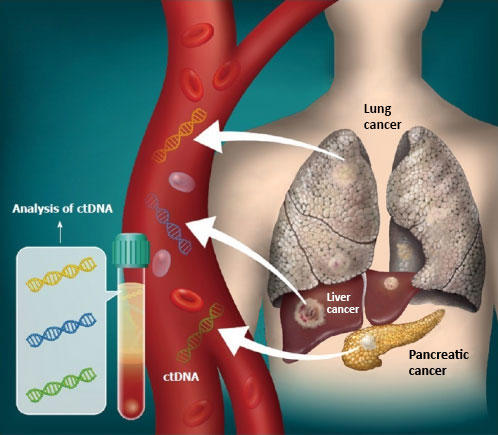An often-ignored type of cell in the brain plays a dynamic and surprisingly complex role in our ability to process information, according to new research from Oregon Health & Science University.
The study, published today in the journal Science, provides direct evidence for the real-time action of a star-shaped type of glial cell, known as astrocytes, in the live brains of fruit flies. The abundant cell type — roughly 35% of all cells in the human brain — appears to be a key part of orchestrating a complex network governing brain function.
"We hope this begins to fundamentally change how the field thinks about astrocytes and their role in mediating neurophysiology and behavior," said senior author Marc Freeman, Ph.D., director of the OHSU Vollum Institute . "Over the long run, it should change how people think about developing therapies for regulation of attention, anxiety and mood."
The discovery was replicated in the astrocytes of rodents, suggesting it's an ancient feature of evolution likely to be conserved in other mammals including people.
"I think it's evolutionarily relevant to survival," said lead author Kevin Guttenplan, Ph.D., a postdoctoral scientist in Freeman's lab. "If a tiger's behind you, you need to rapidly change how whole brain regions are thinking — it's time to shut out everything else on your mind and entirely focus the brain on escaping. It's not the time to think about anything else."
Building on discoveries
At one time, astrocytes were thought to serve only a supporting role by providing food and removing waste for neurons, the cells that form the brain's "hardwiring" by transmitting signals enabling us to think, act and feel sensations.
In 2016, Freeman and collaborators documented for the first time that astrocytes also transmit signals between neurons.
Building on that discovery, researchers show some of the specific mechanisms revealing how those cells transmit signals. It turns out to be a highly complex interplay in which astrocytes can turn on and off their ability to respond to chemical neurotransmitters in the brain, such as dopamine and glutamate.
"Astrocytes are really big, and a single cell can have 100,000 synapses capable of sending signals to other cells," Guttenplan said. "This mechanism allows them to choose which neurons to listen to. Being able to turn off some of those circuits allows astrocytes to make sense of the cacophony of activity occurring in in the brain from moment to moment."
Researchers found that by manipulating this gating pathway within astrocytes, they were able to disrupt the behavior of the fruit flies — highlighting the fact that these small changes can have a potent impact.
'Astrocytes may be the key'
Neuroscientists have previously assumed astrocytes to be a much more passive player in brain physiology.
"This study shows the importance of astrocytes in neuronal activity and behavior," said Miriam Leenders, Ph.D., program director at the National Institute of Neurological Disorders and Stroke, part of the National Institutes of Health, which funded the study. "It also demonstrates how fundamental neuroscience studies in model systems like the fruit fly can provide pivotal new insights into brain physiology."
The new research reveals that astrocytes can directly respond to messages from all types of neurons. In this way, they play a role in the complex network of neuronal signaling that drives cognition and controls physical behavior. In addition, they found these responses change dynamically with brain state, allowing astrocytes to orchestrate the complex network of neurons enabling the brain to attend to the tasks at hand.
"These cells do actively control neuronal activity, really powerfully," Guttenplan said.
However, scientists caution that the discovery complicates scientific understanding of how the brain functions. Imagine a single astrocyte bristling with thousands of synapses whose gating mechanisms may be alternately activated or silenced by myriad cues swirling around it. And then multiply it by millions of astrocytes throughout the entire human brain.
"It's overwhelmingly complicated," Guttenplan said.
At the same time, researchers are increasingly finding evidence that glial cells play a role in brain injuries and in neurodegenerative conditions such as Alzheimer's and Parkinson's diseases. Improving scientific understanding about how these cells function could help to prevent disease or develop treatments.
"In some of these conditions, things like focus and attention get disrupted," Guttenplan said. "Astrocytes may be the key."
In addition to Freeman and Guttenplan, co-authors include Isa Maxwell, B.A., Erin Santos, B.A., Luke A. Borchardt, B.S,, Ernesto Manzo, Ph.D., and Leire Abalde-Atristain, Ph.D., of OHSU; and Rachel D. Kim, Ph.D., of the New York University Grossman School of Medicine.
The research reported in this publication was supported by the Helen Hay Whitney Foundation, and the National Institute of Neurological Disorders and Stroke of the National Institutes of Health under Award Numbers F32NS119352, T32NS007466, R01NS053538 and R01NS124146. The content is solely the responsibility of the authors and does not necessarily represent the official views of the NIH.
All research involving animal subjects at OHSU must be reviewed and approved by the university's Institutional Animal Care and Use Committee , or IACUC. The IACUC's priority is to ensure the health and safety of animal research subjects. The IACUC also reviews procedures to ensure the health and safety of the people who work with the animals. The IACUC conducts a rigorous review of all animal research proposals to ensure they demonstrate scientific value and justify the use of live animals.






